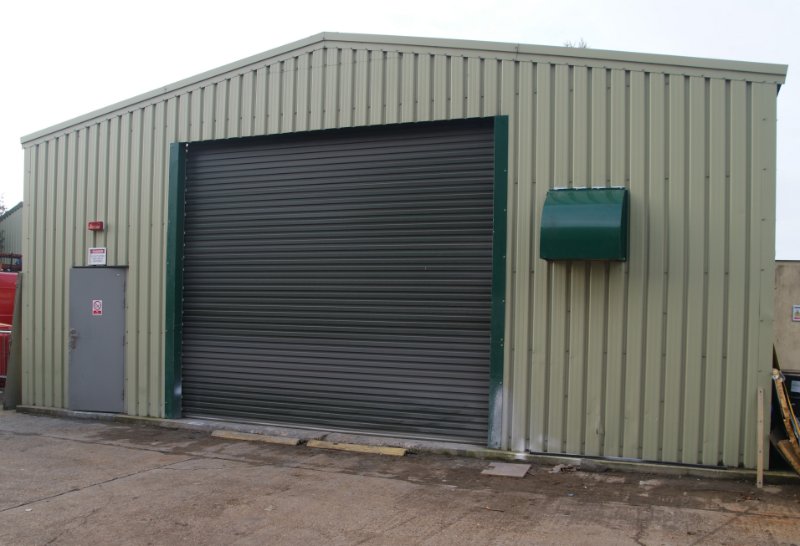Industry Leading
In-House Blast Cleaning Services

With the use of specially designed facilities, we can ensure that our results are not only of the highest quality, but also are performed safely and in an efficient manner.
- Vapour blasting
- Bead blasting
- Dry ice blasting
Our in-house blasting facility services
Utilising specific in-house blasting locations for the various abrasives allows our operatives to keep stations clean and free of contaminants. Procedures and clean-up are, therefore, quicker – getting your cleaned, blasted and protected surfaces back to you sooner.
Vapour blasting
Vapour blasting is a highly effective process that offers cleaning as well as surface preparation. By propelling abrasives through a compressed air and water mixture, this technique drives a soft, cushioned impact, allowing for a more uniform, satin finish than dry methods. Although this approach is initially less harsh on surfaces, it can effectively remove dirt, contaminants, rust, old paint, and corrosion whilst remaining suitable for delicate materials.
A key benefit of using vapour in-house blasting is the reduced amount of dust particles emitted while the process is carried out. When the abrasive media hits the surface, it is flushed away with the water, ensuring both efficiency and safety.
Bead blasting
AS cleans small items using low pressure in-house blasting cabinets, whilst our walk-in blasting unit is suitable for larger items. Depending on your desired surface effect, we can offer a wide range of appropriate abrasives – round, glass beads will provide the smoothest finish whereas ground quartz will give a shinier, coarse finish, enabling paint and coatings to adhere effectively.
Also referred to as shot blasting, bead blasting is a great way to clean metal surfaces without the use of any chemicals or special pellets. It is a fine and versatile method used to treat corroded surfaces, remove cosmetic flaws and provide surface preparation. Suitable for a wide range of metal surfaces – from hardy aluminium, stainless steel, and titanium, to softer, decorative varieties such as brass, silver, and copper.
Dry ice blasting
An eco-friendly and safe in-house blasting technique that effectively cleans surfaces without solvent action, causing damage or producing secondary media debris. During dry ice blasting, pellets are projected at the surface in a high-velocity stream, breaking the bond between contaminant particles and the surface; if the substrate is strong enough to resist the effect of the gas generation, it will not be damaged or abraded, leaving it clean and prepared.
Dry ice – a solid form of CO2 – is also chemically inert, making it non-toxic and non-conductive which, in turn, makes it safe for the operator to use. As sublimation takes place on the first impact, there is no secondary impact to the surrounding area or localised equipment, nor any waste to clean up – allowing for immediate application of paint or coatings; minimising production time.
A in-house Blasting Company You Can Trust
When you choose AS Blasting and Coatings for your resurfacing needs, you are guaranteed complete customer satisfaction. We know that trust is vital to a successful experience, so rest assured that all AS employees are CSCS Registered and carry all relevant certifications.




Get a free quote today
Request a Callback
Fantastic service from Mat. He went above and beyond to accommodate me and I had the parts back within a few days. All work was finished to a high quality. Very very pleased with the end result and the service as a whole. Would recommend.
Great service provided by a great team at AS Blasting & Coatings. Highly recommend it to anyone out there looking for blasting and coating services. this is the company you need to use so get in contact with them.
In-house Blasting FAQs
What is the process of abrasive blasting?
Surfaces all differ in requirements and hardness, therefore need a specific and bespoke service to achieve the best finish possible. Depending on the desired finish, abrasive media is chosen; for example, glass beads will give a clean, polished finish for surfaces that may not need to be coated whereas abrasive blasting media like grit or aluminium oxide will leave a rougher finish for coatings to affix effectively. After the media and approach have been chosen, blasting can commence; either at our in-house facilities or on your site.
What is brush-off blast cleaning?
The Society for Protective Coatings holds a standard of sp7 which has the equivalent surface finish as if the cleaning took place with manual scraping and wire brushing. Once a surface has been cleaned by the process of abrasive blasting it should be free of contaminants, dirt, oil, grease etc. A brush-off blast cleaned surface is a standard of blast cleaning surface preparation; a surface that appears to have these factors eliminated without viewing under magnification.
How many types of abrasive blasting are there?
The types of abrasive blasting can differ by how they operate and by what is used as the media. Various finishes can be achieved with different abrasive media and processes that highly depend on the surface at hand. Shot blasting uses a centrifugal mechanism to propel steel beads at the substrate at incredibly high speeds, ripping apart the bond contaminants have made with the surface. Whereas abrasive blasting that uses other media is usually met with compressed air within a spray gun mechanism that forces the abrasive within an airstream at the surface, removing mill scale, dirt rust and any other pollutants.
What are blast cleaning technologies?
There are many elements and types of equipment involved with abrasive blasting; from centrifugal mechanisms, and compressed air spray guns to blast cabinets and rooms. In most methods and approaches to abrasive blasting, there is an air supplier or compressor, an abrasive media vessel, directional fittings such as valves, hoses, pipes etc and a blast nozzle. All of these components can vary to give different finishes to the surface being cleaned; whether you need a rough, etched surface prior to powder or protective coatings or a polished finish for machine parts.
What is blast cleaning and maintenance?
Blast cleaning, also known as abrasive blasting, sees the removal of debris, pollutants, and unwanted particles from machine parts, mechanisms, and components. This process ensures that elements run smoothly without rust or grease impeding performance. It is a great way to clean internal elements but abrasive blasting can also be used to clean buildings or other exterior surfaces. Abrasive blasting can effectively remove algae, moss, ivy remnants and other dirt from the facade of the structure. This cleaning method will keep the appearance and finish of buildings looking as best as possible.
We don’t just offer in-house blast cleaning
We accommodate an eclectic range of blasting and coating projects throughout East Anglia, the South East and the East Midlands. Ensuring the best results are always achieved, we provide a bespoke approach, tailored to the surface’s needs using our wide range of services.
Protective Coating
For surfaces consistently exposed to harsh weather conditions or high temperatures, a coating of protective, resistant liquid metal substances can be the key to avoiding corrosion and ensuring long-term durability. Other benefits of this service include increased conductivity, enhanced friction properties and improved decorative finishes.
Powder Coating
A more environmentally friendly approach to product finishing, our powder coating services exceed many national environmental protection standards – minimising wastage and the presence of Volatile Organic Compounds whilst being tough and durable. This modern approach to coating can be used in place of liquid painting and curing, reducing the negative environmental impact of VOCs, whilst producing the same brilliant results.